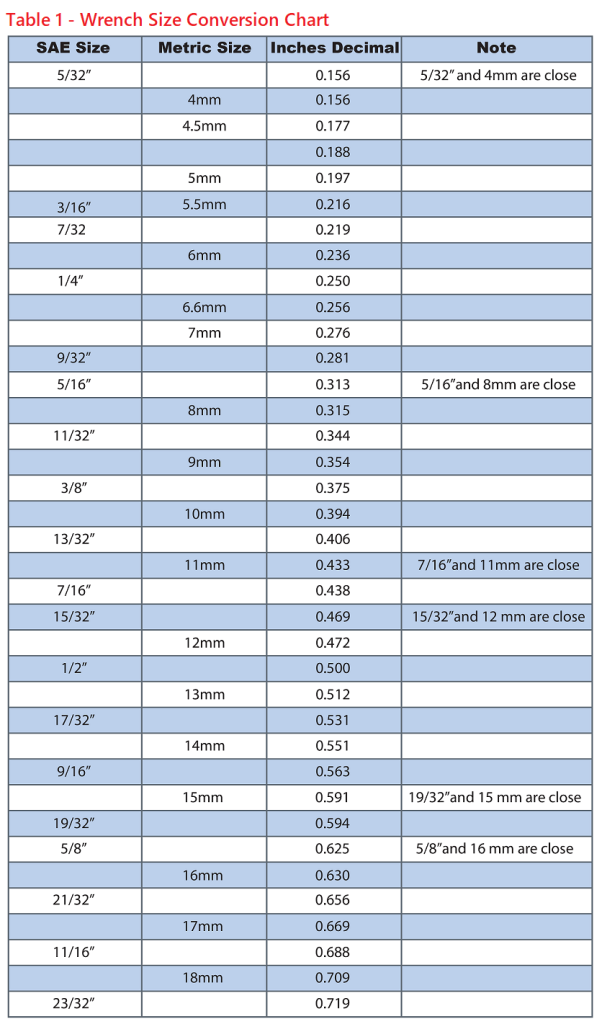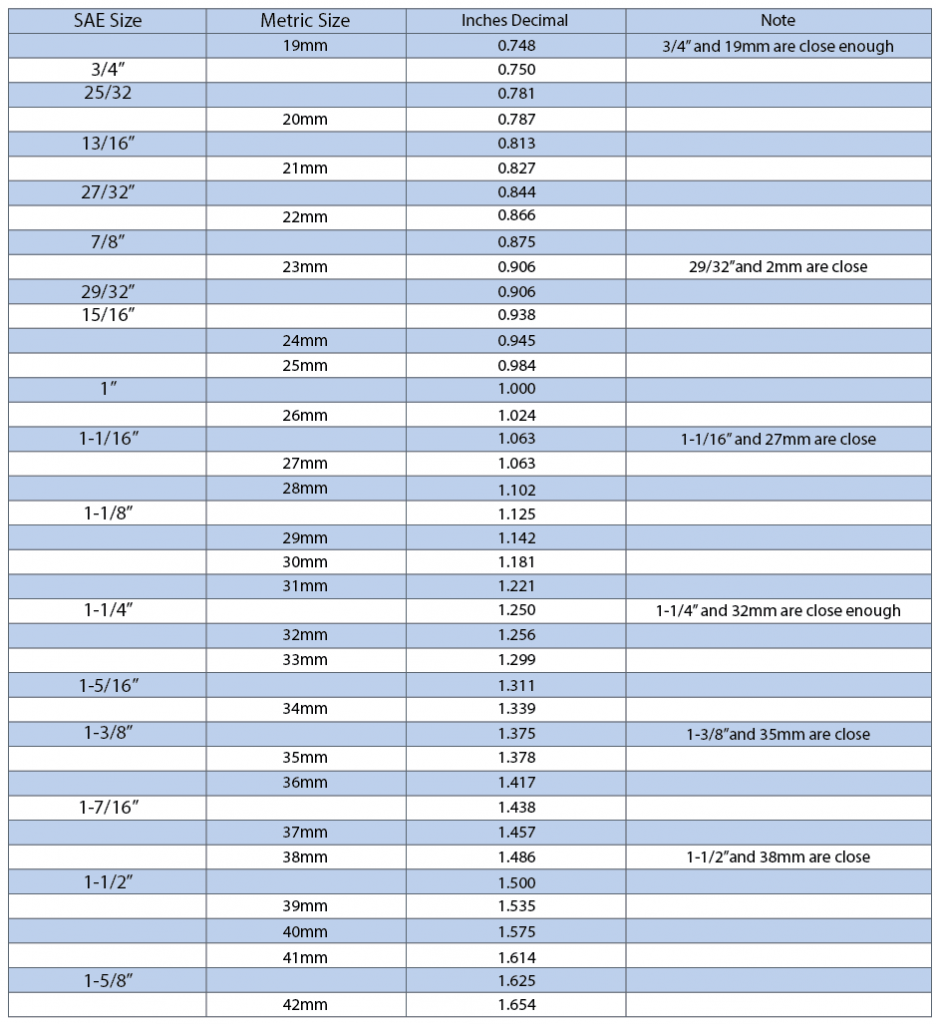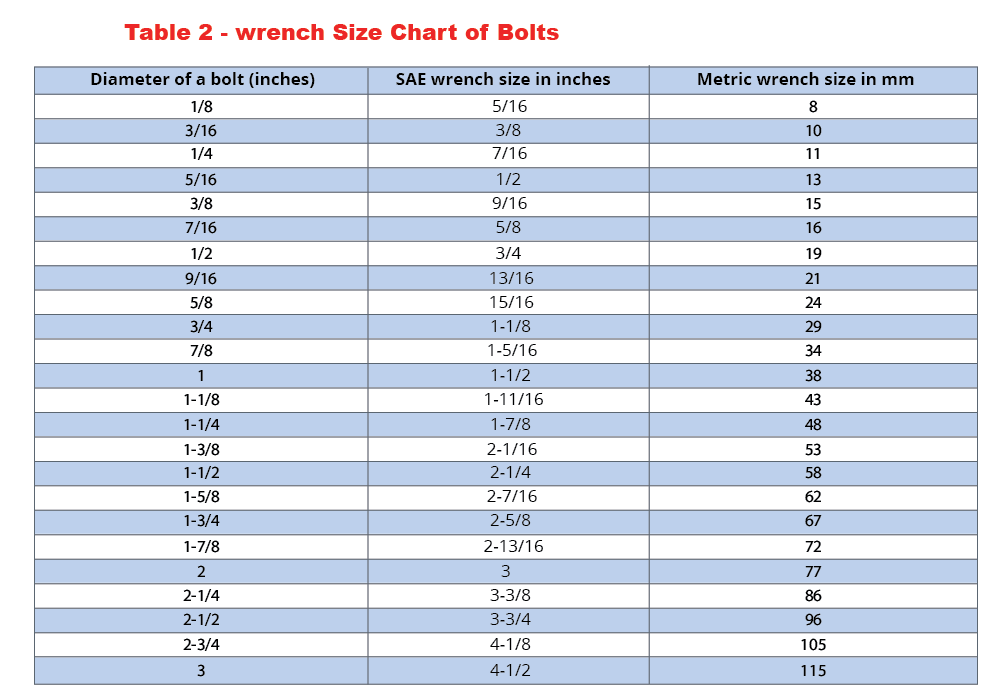If you want to know about different sizes of wrenches, you can read below. We have also included conversion charts to convert the wrench size from metric to SAE and vice versa. So, let’s get started.
Wrench Size Chart (SAE to Metric)
In most cases, your average wrench set won’t have every single wrench size available. And you would be using some commonly available wrench sizes. So, understanding or differentiating between them won’t be much of a problem. For example, a car mechanic would use different types of wrench sizes. And a cycle mechanic, on the other hand, will use a limited set of wrenches. It all depends on what you are going to use it for. However, sometimes due to the different measurement units, you might not be able to make the correct choice. In such situations, you can read through the below-listed conversion chart. It’ll help you convert the units from SAE to metric for easy identification.
If you’re located somewhere in the US, you’re more likely to have SAE wrenches in your set. And people from other places will mostly have metric wrenches in their kits. Uspipeing the above wrench conversion chart, you can find the correct fitting standard or wrench for your bolt size. Bolts are less likely to strip while fastening than screws or nuts when you’re using a substitute wrench. So, the risk of messing up the job reduces if you use the correct tool of the correct size. However, it’s always preferred to use metric wrenches on metric hardware, and the SAE wrenches on SAE ones.
How to find the right wrench size
While reading the above conversion chart, make sure to check the bolt you’re fastening. It’ll help you find the right options for metric and SAE wrenches. Take an example of a bolt of size 9/16 inches. For this bolt, you’ll have two options for wrench size on both of the measurement scales. And if you’re in such a situation, you’ll have to use and try all of the possible wrench sizes to find the correct one.
Converting the wrench sizes for metric bolts
When finding the correct wrench size for a metric bolt, the conversion is easy. Once you find the wrench(metric) you want to choose, find its equivalent in the SAE chart. You may find that the metric side of the chart has some gaps. But that’s alright as we have included all the commonly used sizes except the 18mm. And the counterpart for 18mm is 45/64″. So, you don’t have to worry.
Converting wrenches of smaller sizes
You can also search for the right spanner size if you didn’t find it here. Here’s a SAE to metric and metric to SAE chart for hex key. However, make sure that you go through all the instructions because replacing small wrenches is harder than the larger ones. Also, the chances of smaller parts getting damaged are more.
2. Wrench Size Chart for Bolts
Below you’ll find a brief conversion of wrench sizes for different bolts. Check out which bolt you’re using from the list of diameters that we’ve listed below. Once you do, you can find the SAE wrench size that you should use for the bolt, followed by the metric wrench listed in the last column.
Conclusion
If you’re a mechanic or deal with sockets and wrenches, you should know the size of the tools that you use. It’ll not only help you precisely arrange them but also comes in handy when you need a job done quickly. However, there are different sizes and measurements based on where you live. But you’ll most probably have either SAE or the metric set of tools. And fortunately, you can find the right counterpart for both of them by going through our conversion charts. So, whether you use metric tools or SAE, you can convert them as per the requirements. Comment * Name * Email * Website
Δ









![]()